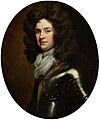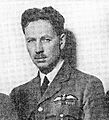List of Scottish representative peers facts for kids
The Acts of Union 1707 joined the Kingdom of Scotland and the Kingdom of England to create the Kingdom of Great Britain. Before this, Scotland had its own Parliament where all Scottish nobles, called Peers, could sit. After the Union, the Scottish Parliament was closed. Instead, a group of Scottish Peers were chosen to represent Scotland in the new British Parliament, specifically in the House of Lords. These chosen nobles were known as Scottish Representative Peers.
From 1707 until 1963, sixteen Scottish Representative Peers were elected. They were chosen from among the Scottish nobility to serve for the length of one Parliament. This meant that after each Parliament was dissolved (ended), a new election was held for these representative peers. This was different from the Irish representative peers, who kept their seats for life.
However, things changed with the Peerage Act 1963. This new law, which started in August 1963, gave all Scottish Peers the right to sit in the House of Lords automatically. Because of this, there was no longer a need to elect special Scottish Representative Peers.
Contents
Who Were the Scottish Representative Peers?
These were important people from noble families in Scotland who were chosen to speak for Scotland in the British Parliament. They helped make laws and decisions for the whole country.
Notable Scottish Representative Peers (1707-1799)
Many important figures served as Scottish Representative Peers during this period. They played a role in shaping the early years of Great Britain.
- Archibald Campbell, 3rd Duke of Argyll was a Scottish representative peer for many years, from 1707 to 1713 and again from 1715 to 1761.
- The Earl of Mar served between 1707 and 1715.
- The 2nd Duke of Queensberry was a representative peer from 1707 to 1708.
- The 1st Earl of Seafield, who later became the 4th Earl of Findlater, served multiple times: 1707-1710, 1712-1715, and 1722-1730.
- The 2nd Earl of Stair was a representative peer from 1707 to 1708, 1715 to 1734, and 1744 to 1747.
- The 1st Earl of Orkney served from 1708 to 1737.
- The 9th Earl Marischal was a representative peer from 1710 to 1712.
- The 1st Earl of Portmore served from 1713 to 1715.
- The 3rd Earl of Hyndford was a representative peer from 1738 to 1767.
- The 3rd Duke of Gordon served from 1747 to 1752.
- The 3rd Earl of Breadalbane was a representative peer from 1752 to 1768.
- The 7th Viscount of Stormont, who later became the 2nd Earl of Mansfield, served from 1754 to 1796.
- The 11th Earl of Eglinton was a representative peer from 1776 to 1796.
- The 6th Earl of Balcarres served from 1784 to 1796 and again from 1802 to 1825.
- The 8th Earl of Lauderdale was a representative peer from 1790 to 1796.
Notable Scottish Representative Peers (1800-1963)
The tradition of electing representative peers continued into the 19th and 20th centuries until the law changed.
- The 5th Earl of Selkirk served from 1806 to 1818.
- The 9th Lord Napier was a representative peer from 1824 to 1832.
- The 12th Earl of Strathmore and Kinghorne served from 1852 to 1865.
- The 12th Earl of Dundonald was a representative peer from 1886 to 1922.
- The 19th Earl of Rothes served from 1906 to 1923.
- The 13th Earl of Dundonald was a representative peer from 1941 to 1955.
- The 10th Earl of Selkirk served from 1945 to 1963.
- The 10th Duke of Atholl was a representative peer from 1958 to 1963.
Peers with Other Titles
Some Scottish Representative Peers also held other noble titles, like a Peerage of Great Britain or a Peerage of the United Kingdom. This meant they might have had another way to sit in the House of Lords, but they were still elected as Scottish representatives.
- James Douglas, 2nd Duke of Queensberry also became the Duke of Dover in 1708.
- James Hamilton, 4th Duke of Hamilton was also created the Duke of Brandon in 1711.
- Alexander Gordon, 4th Duke of Gordon also held the title Earl of Norwich from 1784.
- John Murray, 4th Duke of Atholl also became Earl Strange in 1786.
- James Hamilton, 8th Earl of Abercorn also held the title Viscount Hamilton from 1786.
- George Douglas, 16th Earl of Morton also became Baron Douglas of Lochleven in 1791.
- Francis Stuart, 9th Earl of Moray also held the title Baron Stuart of Castle Stuart from 1796.
- John Stewart, 7th Earl of Galloway also became Baron Stewart of Garlies in 1796.
- Hugh Montgomerie, 12th Earl of Eglinton also held the title Baron Ardrossan from 1806.
- James Maitland, 8th Earl of Lauderdale also became Baron Lauderdale of Thirlestane in 1806.
- John Campbell, 4th Earl of Breadalbane and Holland also held the title Baron Breadalbane from 1806 and Marquess of Breadalbane from 1831.
- William Cathcart, 10th Lord Cathcart also became Viscount Cathcart in 1807 and Earl Cathcart in 1814.
- James Hope-Johnstone, 3rd Earl of Hopetoun also held the title Baron Hopetoun from 1809.
- George Hamilton-Gordon, 4th Earl of Aberdeen also became Viscount Gordon in 1814.
- John Bowes, 10th Earl of Strathmore and Kinghorne also held the title Baron Bowes from 1815.
- George Ramsay, 9th Earl of Dalhousie also became Baron Dalhousie in 1815.
- George Gordon, 5th Earl of Aboyne also held the title Baron Meldrum from 1815.
- George Boyle, 4th Earl of Glasgow also became Baron Ross in 1815.
- William Kerr, 6th Marquess of Lothian also held the title Baron Ker of Kersehugh from 1821.
- Archibald Primrose, 4th Earl of Rosebery also became Baron Rosebery in 1828.
- William Hay, 18th Earl of Erroll also held the title Baron Kilmarnock from 1831.
- Robert Hamilton, 8th Lord Belhaven and Stenton also became Baron Hamilton of Wishaw in 1831.
- Lucius Cary, 10th Viscount Falkland also held the title Baron Hunsdon from 1832.
- Charles Douglas, 6th Marquess of Queensberry also became Baron Solway in 1833.
- John Ogilvy-Grant, 7th Earl of Seafield also held the title Baron Strathspey from 1858.
- John Elphinstone, 13th Lord Elphinstone also became Baron Elphinstone in 1859.
- James Sinclair, 14th Earl of Caithness also held the title Baron Barrogill from 1866.
- John Rollo, 10th Lord Rollo also became Baron Dunning in 1869.
- Cospatrick Douglas-Home, 11th Earl of Home also held the title Baron Douglas of Douglas from 1875.
- William Elphinstone, 15th Lord Elphinstone also became Baron Elphinstone in 1885.
- Charles Colville, 10th Lord Colville of Culross also held the title Baron Colville of Culross from 1885 and Viscount Colville of Culross from 1902.
- Claude Bowes-Lyon, 13th Earl of Strathmore and Kinghorne also held the title Baron Bowes from 1887.
Images for kids
-
Archibald Campbell, 3rd Duke of Argyll, a Scottish representative peer 1707 to 1713, 1715 to 1761.
-
The Earl of Mar, a Scottish representative peer between 1707 and 1715.
-
The 2nd Duke of Queensberry, a Scottish representative peer between 1707 and 1708.
-
The 1st Earl of Seafield, later 4th Earl of Findlater, a Scottish representative peer between 1707 and 1710, 1712 and 1715 and 1722 and 1730.
-
The 2nd Earl of Stair, a Scottish representative peer between 1707 and 1708, 1715 and 1734 and 1744 and 1747.
-
The 1st Earl of Orkney, a Scottish representative peer between 1708 and 1737.
-
The 9th Earl Marischal, a Scottish representative peer between 1710 and 1712.
-
The 1st Earl of Portmore, a Scottish representative peer between 1713 and 1715.
-
The 3rd Earl of Hyndford, a Scottish representative peer between 1738 and 1767.
-
The 3rd Duke of Gordon, a Scottish representative peer between 1747 and 1752.
-
The 3rd Earl of Breadalbane, a Scottish representative peer between 1752 and 1768.
-
The 7th Viscount of Stormont, later 2nd Earl of Mansfield, a Scottish representative peer between 1754 and 1796.
-
The 11th Earl of Eglinton, a Scottish representative peer between 1776 and 1796.
-
The 6th Earl of Balcarres, a Scottish representative peer between 1784 and 1796 and 1802 and 1825.
-
The 8th Earl of Lauderdale, a Scottish representative peer between 1790 and 1796.
-
The 5th Earl of Selkirk, a Scottish representative peer between 1806 and 1818.
-
The 9th Lord Napier, a Scottish representative peer between 1824 and 1832.
-
The 12th Earl of Strathmore and Kinghorne, a Scottish representative peer between 1852 and 1865.
-
The 12th Earl of Dundonald, a Scottish representative peer between 1886 and 1922.
-
The 19th Earl of Rothes, a Scottish representative peer between 1906 and 1923.
-
The 13th Earl of Dundonald, a Scottish representative peer between 1941 and 1955.
-
The 10th Earl of Selkirk, a Scottish representative peer between 1945 and 1963.
-
The 10th Duke of Atholl, a Scottish representative peer between 1958 and 1963.
See also
- List of elections of Scottish representative peers
- List of Irish representative peers
























